More than five years ago, I reviewed the original Simtek security sensor device while they were still in the midst of a crowdfunding campaign to get that first product launched. Though it was Simtek’s earliest attempt at delivering their vision, it worked exactly as it was supposed to. Fast forward to today and the brand new StealthALERT sensor is available with refined features and additional functionality.
The original unit had a light sensor and an infrared motion sensor. StealthALERT improves on those and adds an accelerometer sensor to the mix. It even provides temperature and humidity readings via the mobile app.
Should any one of those three alarms trip on the StealthALERT, the Simtek system will, if you want (more on customizing alerts later), send you an SMS text message as well as a push notification via the mobile app.
Rather than being dependent on WiFi, a hardwired internet connection, or even 5G wireless, the StealthALERT operates via a 4G cellular modem with dual antennas. It runs a global SIM card and automatically uses whatever network has the most powerful signal, though it’s designed to successfully send alerts even with the faintest of signals.
Since the StealthALERT operates off a basic, worldwide (works in 200+ countries) cell phone system and sends end-to-end encrypted alerts for up to a year on a single battery charge, it’s pretty darn sabotage-resistant and will reliably send alerts even during power and internet outages.
The white geodesic dome looking thing is the light sensor. If the StealthALERT is in the dark, it alerts if it gets brighter. For instance, if it’s inside of a drawer, a suitcase, a liquor cabinet, a gun safe, a storage unit, a crypt, an RV or sailboat, the trunk of a vehicle, a closet, a coffin, a storage shed, a Pelican case, a secret lair, a toolbox… It’ll alert when those things are opened.
The sensor in the middle of that red area is the infrared motion sensor. It “sees” an approximately 15-foot by 15-foot area and detects movement inside of that area just like a typical security alarm motion sensor.
New to the StealthALERT is an accelerometer, which detects movement or vibration of the sensor itself. This is a smart addition as it will alarm first in many scenarios, such as an attempted safe break-in, vehicle trunk break-in, theft of a small safe or suitcase, etc. In those scenarios, the light and infrared motion sensors may not alarm until the container (safe, trunk, etc.) is opened, whereas the accelerometer is likely to trigger upon initial tampering.
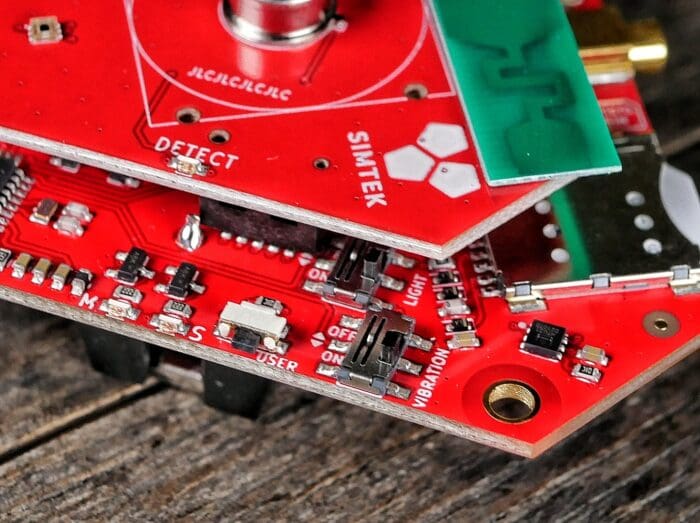 Also new to the StealthALERT is the ability to turn off the light and vibration sensors. By opening up the external clamshell housing of the unit, the owner can flip a light switch style switch between “on” and “off” right there on the circuit board. There’s one for “LIGHT” and one for “VIBRATION” as marked next to each switch on the board.
Also new to the StealthALERT is the ability to turn off the light and vibration sensors. By opening up the external clamshell housing of the unit, the owner can flip a light switch style switch between “on” and “off” right there on the circuit board. There’s one for “LIGHT” and one for “VIBRATION” as marked next to each switch on the board.
Having the option to turn those off is great for certain use cases. For instance, turning off the light sensor in order to alarm an RV or boat with the StealthALERT located somewhere that’s exposed to natural light. Or turning off the vibration sensor to alarm a glove box, trunk, suitcase, gun case, etc.
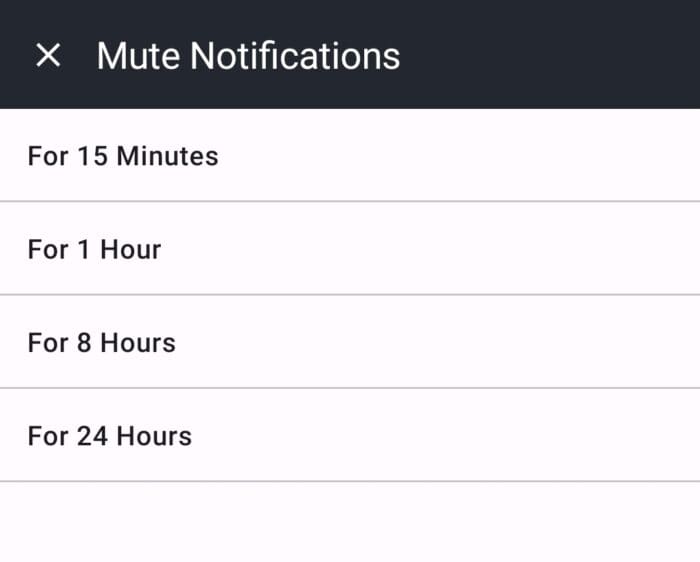 If you aren’t looking to disable a sensor, but do want to mute alerts for a hot minute (e.g. you’re going in and out of your safe), this can be done via the mobile app. There’s a bell icon in the top, right corner of the main app dashboard, and clicking it brings up the menu seen above. Just choose for how long you want alerts muted, and it’s done. No more text messages or push notifications.
If you aren’t looking to disable a sensor, but do want to mute alerts for a hot minute (e.g. you’re going in and out of your safe), this can be done via the mobile app. There’s a bell icon in the top, right corner of the main app dashboard, and clicking it brings up the menu seen above. Just choose for how long you want alerts muted, and it’s done. No more text messages or push notifications.
You’ll know alerts are muted, because that bell icon has turned orange and has a line through it until notifications are live again.
All that said, even while muted the unit itself still alerts and the app still logs the alerts. You just don’t get notified.
Within the app settings you can adjust the name of your device, the text of the alert message, whether or not to receive push notifications (if you turn that off you’ll continue to receive text messages), or mute all notifications more permanently than the bell option on the main page provides for.
Text messages look like text messages. As you can see in the previous screenshot, if you edit the name and message then it changes almost all of the text message you’ll receive, minus the part where it informs you what sensor was triggered in your StealthAlert.
The mobile app allows multiple StealthALERT sensors to be linked to a single account and you can adjust and name each one separately. In addition, you can add trusted people who will receive the same alerts that you do.
Clicking on any of the alerts that are logged within the app brings up the screen above. It shows a detailed map of cell phone network-triangulated location (accurate to within about a city block…I zoomed way out on the map for the screenshot above so you can’t see where my house is, because the default zoom showed like a four-by-four block area and the pin was only a few houses away), battery level, 4G signal strength, which sensor was triggered, the temperature of the unit, the humidity at the unit, and the unit’s approximate latitude and longitude coordinates with a handy link right there to open your phone’s default map program.
In my neighborhood, with the StealthALERT inside of my Lincoln Safe, it has a weak signal without the use of the included, external antenna and a good to strong signal with the antenna plugged in.
I won’t actually bother using the external antenna, though, as a weak signal is still more than enough. Because of how simple the message sent by the StealthALERT is, it makes it out just fine with barely any signal required whatsoever.
There she is, set facing forwards on the top shelf of my Lincoln Safe safe.
A micro USB port allows the removable 123A battery to be charged while it’s inside the unit. You can also pop it out of the bottom battery drawer and charge it elsewhere, swap it with a fully-charged one, or leave the unit plugged in at all times.
Then again, the battery lasts about a year even if the unit is alerting 10 times per month, so charging it isn’t a huge concern. Especially since the darn thing sends you an alert when the battery gets low, so you don’t even have to remember on your own!
Simtek’s new StealthALERT arrived in really nice packaging and took me all of like 52 seconds to set up. I used the app to scan the QR code on the bottom of the sensor, it registered the sensor to my app, I typed in my phone number, and it was done and active. Couldn’t be easier.
As with Simtek’s first release, the StealthALERT is simple and reliable. It does exactly what it’s supposed to exactly when it’s supposed to. The addition of internal switches to disable sensors, and the app’s ability to mute alarms, log temperature and humidity, and more is really great.
The StealthALERT is a fantastic product with dozens of meaningful uses. It’s pretty wild that it can be thrown in a suitcase while you travel around the world and it’ll just continue to work, connecting automatically to the cell phone networks wherever you go.
Which reminds me . . . the only downside to anything that operates on the cellular network is a monthly payment for the data plan. It’s probably less than you’d expect, though, at $4.20 per month or $46.20 if paid up-front annually (get one month free). There’s no contract and it can be cancelled at any time. You simply pay from within the mobile app.
I find everything about the StealthALERT to be simple, effective, and secure. There are so many great ways to use one or more sensors, and they’re also a solid backup to a household or commercial security system that relies on power and/or an internet connection to function. The StealthALERT can’t be hacked, is nearly invulnerable to typical power and internet outages, and alerts reliably.
Specifications: Simtek StealthALERT
Dimensions: 1.48” x 3.66” x 3.26”
Weight: 3.6oz / 104g
Material: ABS plastic
Battery life: Up to 1 year
Sensors: Infrared Motion (PIR), Light, Accelerometer
Sensivity: 15′ x 15′ Motion Range, Any Visible light, Medium Vibration
Connectivity: 4G Cellular (LTE/GSM/UMTS)
Cellular Range: Worldwide coverage. High performance global Simtek simcard preinstalled
Battery Type: Rechargeable Lithium Ion Battery: RCR123a 650 mah
Warranty: 1 year limited, includes technical support
MSRP: $200 (on sale right now for $150)
Ratings (out of five stars):
Overall * * * * *
The Simtek StealthALERT is a great idea, well-executed. It serves an extremely clear purpose and it does it reliably and correctly, with the right amount of end-user customization to accommodate different use cases. It’s a smart addition to any security system, whether it’s keeping teenagers out of the liquor cabinet, alarming a storage unit, as a backup to an alarm system that’s dependent on power and/or internet service, or for any of the other potential uses (both silly and serious) listed in the review.


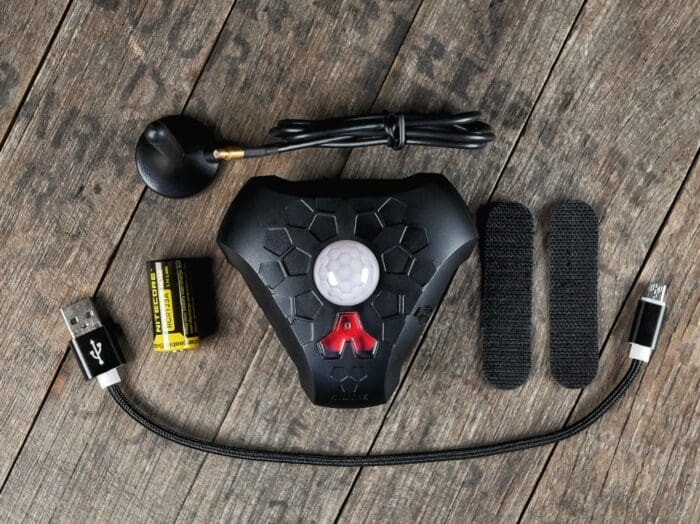
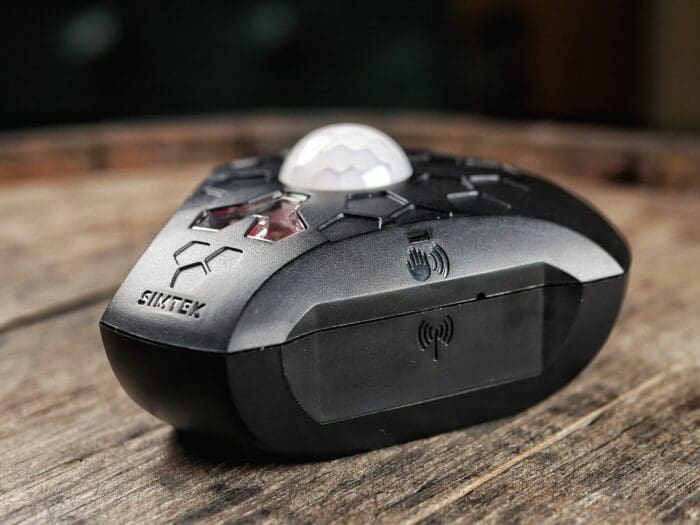

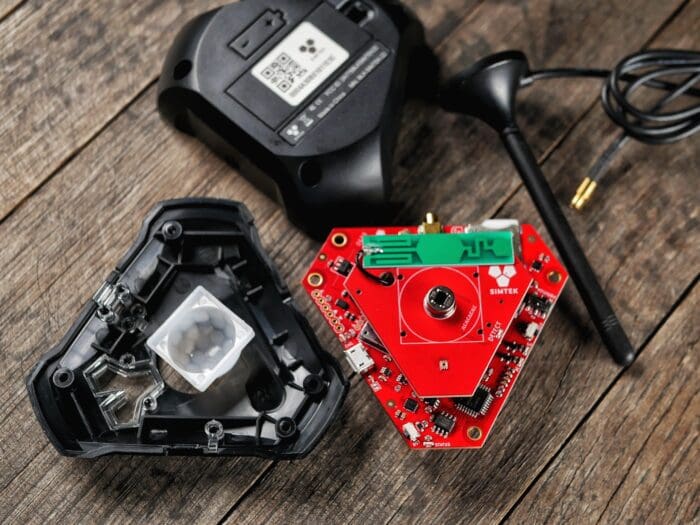

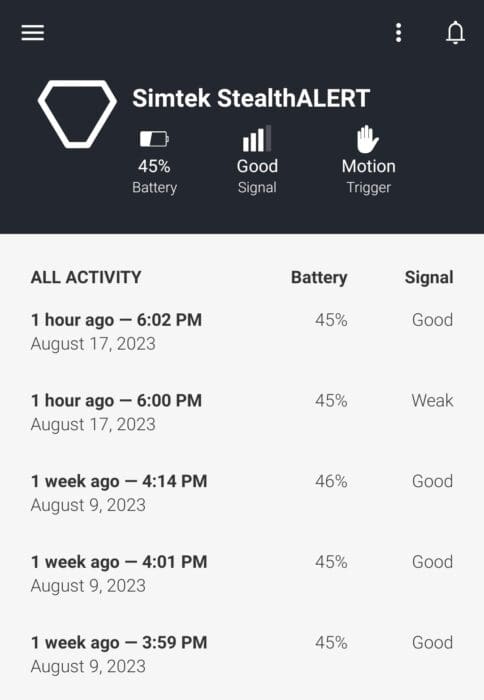

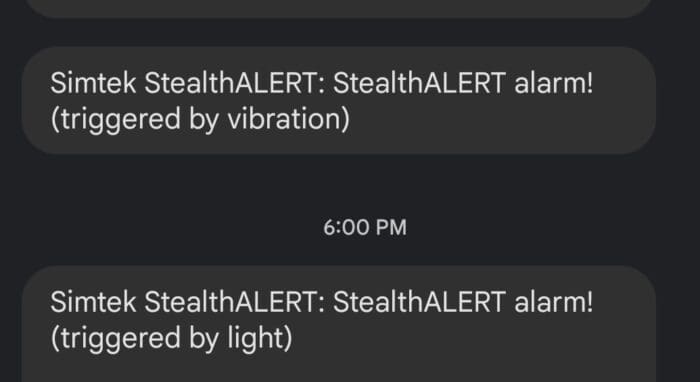
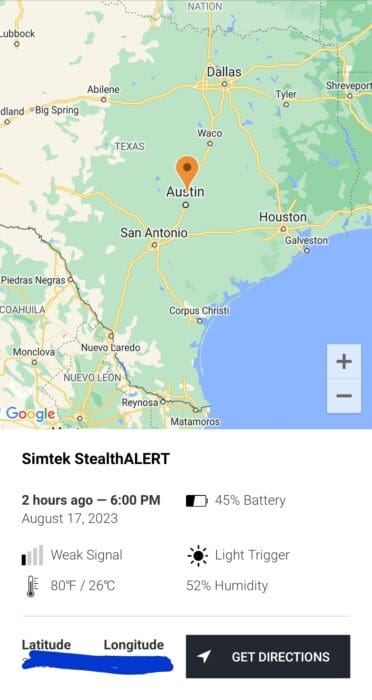
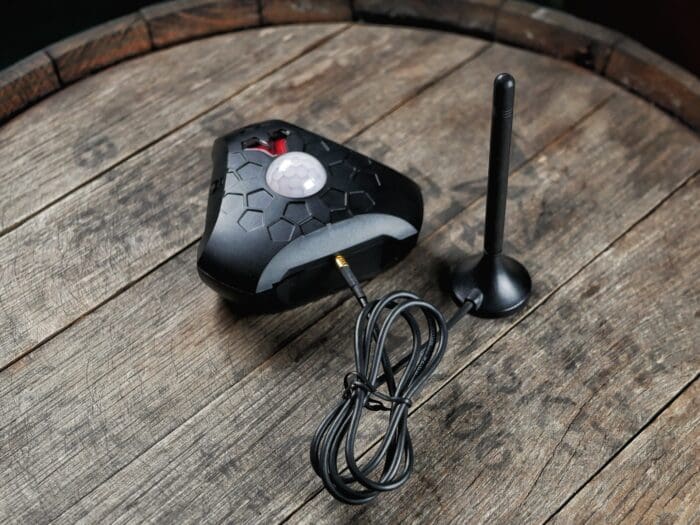
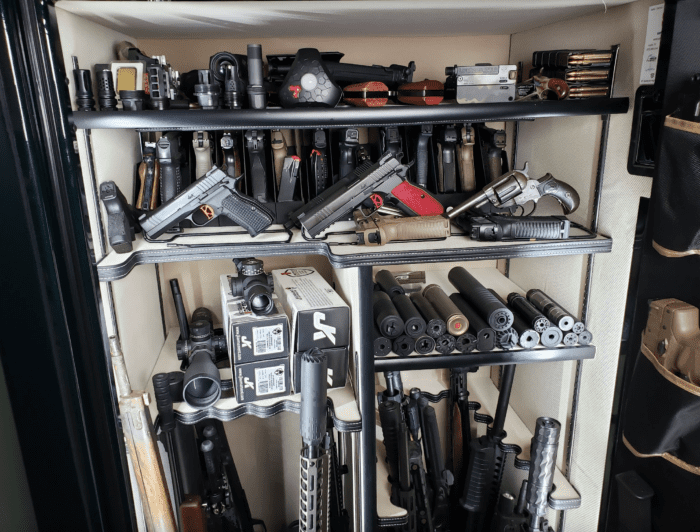

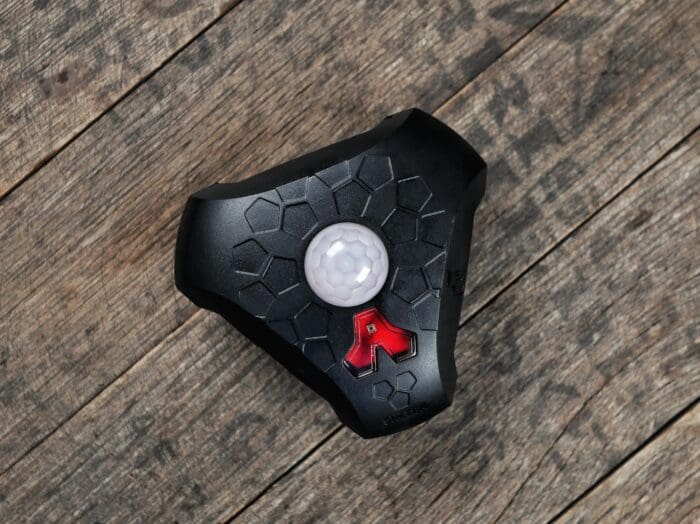



sis could use this on her husbands sailboat.
That’s not a bad idea. It would let you know when riff raff is rifling through your boat. It wouldn’t wipe out your batteries if you are in a slip that doesn’t have power for some reason.
We have quite a few folks using it to monitor their boat. Just make sure to disable the vibration sensor or you’ll get a bunch of false alarms when the boat rocks! https://www.simtek.io/pages/how-to-disable-vibration-and-light-sensors-on-your-simtek-sensor
AT first thing thing was a bit confusing. I couldn’t tell what it was or what is was for. Then it hit me. It’s a bug.
Definitely not a bug. The device was built with 2A owners in mind. The sensor does not record ANY audio or ANY video. StealthALERT does not know whether you’re monitoring a cookie jar or an arsenal. And many customers ask us, why no video? Well, for one, it would reduce battery life significantly and mostly just be shots of your arm going into the safe…and for two, we don’t want a court order asking us to turn over videos of our customers collections. For that reason, the device is about as privacy and safe as you can get. We truly don’t know or care what our customers are monitoring. Just that it does so reliably. Thanks for the comment
“it’s a bug”
I was thinking crustacean – although the shape is reminiscent of a kudzu bug.
Mollusk, l think.
Does somewhat resemble a kudzu bug. l admit. but definitely a mollusc.. mollusk.
Right fancy one, too.
is it possible to set certain days and times for not alerting? If I have one in my garage, I’d rather it not notify me that I’m on my way to work, or getting back from work, at that certain time every day.
You can MUTE the alarms in the app for 15 minutes up to 24 hours but at this time you can’t set a window of alerting. We do offer 30 day FULL refunds which includes a 30 day free trial so it’s pretty risk free. We ultimately only want the product going to folks who find it valuable. Thanks for the feedback
Went to look at the website and yep, DATA Plan required.
So nope. Not going to get one, rather run it off my wifi than have to pay a constant amount every month.
I could see a WiFi version being popular for that reason. I do believe Simtek should make one in the future, whether it’s WiFi-only or it’s a second version of this StealthALERT that adds a WiFi modem on top of all of the other things and then the user can choose how to connect it and can activate/deactivate cell service as desired.
Obviously WiFi has multiple security issues that come along with it, since your alarm is dead if the power is out or the internet is out, and it’s also hackable. Plus WiFi generally wouldn’t work if you’re trying to alarm a storage unit, RV/boat, or other place/thing where there’s no WiFi available.
This is why Simtek went with 4G instead, in addition to the fact that it makes the sensor globally mobile without the user having to do anything (it automatically connects to cell networks, whereas WiFi would require manually connecting it when you travel).
So I absolutely understand why 4G is a better choice for reliability, security, mobility, etc., but yes it also comes with a $4/month bill for the service. I, too, dislike that, but ultimately I figure I waste $3-6 a pop a few times a month buying stupid beverages I don’t need and I generally am not concerned about this sort of dollar amount so why should it feel like such a big deal for this thing when I’ll get some random drink at the gas station or grocery store without a second thought?
Because it all adds up, it’s great that you have enough disposable income for that, but at $48/yr, I can’t justify that amount of expenditure merely as a safeguard for a gun safe that stays locked. Not at this time.
It’s a great idea, but not one I can currently afford.
You’re paying for the ultimate in security and the data plan is $4.20 per month (or just $3.85 monthly if you prepay annually), less than a mag of good ammo or a coffee these days. You’re paying for the ultimate in redundancy and security. We likely would not make a WIFI version because WIFI frequencies do not penetrate through a safe well (2.4ghz-5ghz higher spectrum) whereas cellular is 900mhz-1700mhz and can penetrate safes and walls much better. Not only that, but WIFI is too easy to defeat your defenses. Unplug the WIFI router or cut the power to your house, or buy a WIFI packet sniffer/and spoof the network…talk about being compromised!
SilentBrick,
I imagine that the manufacturer is not making any significant amount of money on that monthly charge for being able to send data over cellular networks–the cellular networks charge for that.
Look at it this way: can you use your cell phone anywhere in the world for $4 per month? Nope. So $4 per month is a very reasonable charge to be able to use a device anywhere in the world.
you should really think about picking up a suppressor or two
Agreed! Though only like half of ’em are visible in that photo 😉
You have a way to beat the “mommy may I tax”?
“I won’t actually bother using the external antenna, though, as a weak signal is still more than enough.”
If I had the felonious intent to steal 20-odd NFA goodies, the second I see that mag-mount antenna, I’m clipping that cable…
And when you clip that antenna cable, StealthALERT auto-switches to the onboard internal antenna you can’t see. Just one of many backup and failsafe features on the product, which is the highest quality and performance monitor on the market. Thanks for the comment good sir
Well, FWIW if I used it I’d still leave the antenna inside my safe. It’s external to the StealthALERT but it boosts the signal so much that I didn’t even consider actually running it to the outside of my safe. You could, of course, but it works well even if you don’t.
Wish I’d had one in my truck in Tulsa a few weeks ago when they busted my window out and stole a few things at the hotel.
I see they are on back order. Any idea when they might be shipped? It says Aug which is now
Runs off wifi??? So easily hacked I suppose. Hard pass from this old man🙄
Old man, it runs off 4G roaming cellular. Not WIFI, for that exact reason. WIFI is too easily hacked, unplugged and defeated. StealthALERT is a totally self reliant system, and the most premium safe alarm on the market for that reason that it uses 4G LTE on a roaming global network that connects to thousands of different networks. Thanks for the comment
We are shipping right now! We are no longer on backorder. Website updated
Thx
Wonder whether the vibration sensing would pick up someone grinding off a catalytic converter if this were on the floor or trunk of a vehicle.
And trip a heavy shock.
Friendly suggestion to end users in remote locations where cellular signal is VERY weak even outside of a metal enclosure such as a gun safe:
Keeping your device’s external antenna well clear of metal objects and maximizing height above ground are paramount considerations.
Several years ago I was camping in a very remote location. At five feet above ground level (the approximate height of your ear above ground when you are standing and talking on your cell phone) my cell phone had no service whatsoever–which made sense because I was in the middle of a forest 11 miles from the nearest cell phone tower. Then I raised up an external antenna (back when some cell phones still had hidden external antenna connectors) about 25 feet above ground and VOILA! — my cell phone had two or three signal bars and worked just fine.
If you are deploying this device in a remote location and there is no cell service at ground level, try installing the device higher up in your structure or installing the external antenna higher up in the air. (Note that you may need an additional length of antenna cable to achieve the height that you need.)
Suggestion to the manufacturer: offer for separate purchase a couple different lengths of antenna cable “extension cords”, maybe 10, 20, and 40 feet?
We offer a metal extension cable of 5 feet https://www.simtek.io/collections/accessories but can certainly offer them up to 10 or even 20 feet if there’s enough demand.
We haven’t had that issue yet, as the sensor was designed to operate with almost no signal strength.
Founder, Simtek
I understand your design intention–and it sounds like a wonderful design.
Keep in mind that there are a LOT of locations where there is no cellular phone signal at five feet above ground. I have been on a cousin’s rural property where their cell phones indicate no service and they are unable to send/receive text messages. If I stand at just the right place at their property, my phone can send/receive text messages. For grins and giggles I checked my cell phone’s receive signal level and it was down to -125 dBm (or maybe even as low as -127 dBm). And that was at one of the higher locations on that property. Next time I am at that property, I will see how cellular receive signal level increases when I go up (vertically) 10 feet and 20 feet–assuming that I can find a proper climbing tree!
Anyhow, I figured that offering a coaxial cable extension to elevate the external antenna another 10 to 20 feet could be a real game changer in those really tough locations.
Great! Now all I have to do is hook up a cell phone ringer to my M60/garage door opener combo so that if this thing trips, I can cut down everyone in the room with a hail of lead.
Get something more reliable that an M60.
I’ve had one of these since the original starter campaign, and it certainly does work. Even let me know when United was lying about where my luggage was; they were banging it around enough to trigger the motion detector (no accelerometer in the old version). I’m happy with it, and the battery life is looooooonnnnnngggg… something that would not be the case if they added GPS, but that could be mitigated by only firing it up when the device has moved some distance, easily tracked by the accelerometer.
It’s great in checked luggage, or in your suitcase left in the hotel. Cars parked in concerning areas. Really anywhere you need to know if something has been disturbed. I don’t travel without it.
Lots of criticism in the comments, and most folks don’t have a clue what they are talking about. This thing does have one major weakness, but it’s not mentioned above. All data flows through a server somewhere. And when that server is down– no alerts. “Never happens” they said… until that one time, March 2020 as I recall when the server was down. It doesn’t send messages to your phone… it sends messages to the server, and that server resends the message to your phone(s). This has advantages and disadvantages.
Overall though, it’s a very useful product. I use mine constantly.
Actually, July 2020 was the outage I think. Have their been others? No way to know.
And oh yeah… you need almost no signal to send a single data packet. This is why you use SMS in emergencies… it will get through when voice calls cannot.
Mine’s SMS, which is the right tech for international travel, though that may be changing. Works fine in my home, and my T-Mobile SMS phone cannot make/receive voice calls due to poor signal. But the SimTek works fine.
Again, quite happy with mine.
Thanks for the comments Frank and for being a customer. We appreciate you good sir. And all data flows on U.S. soil through U.S. servers encrypted and anonymized and has limitations on storage and retention. We are very pro-2a and want to ensure the privacy of our customers. Our top concern is always reliability and performance of the product.
Caluanie Muelear Oxidize for sale
buy gbl cleaner
buy gbl online
buy Caluanie Muelear Oxidize
https://cocainestimulants.co/
https://crystalmethbuy.com/
https://buyesketamine.com/
https://thegoldentriangleice.com/
https://clinicalresearchchemicals.com/
https://qualitycounterfeitbanknotes.com/
https://firearmssupplier.com/
https://e-vendors.com/
https://cocaineinaustralia.com/
cheap again
https://adhd30mg.com/
https://medicianinjectables.com/
https://dtradeempire.com/
https://shuracosmetics.com/
https://express-document-inc.com/
https://alpharoadriders.com/
https://arcade1upmachines.com/
https://jvsholdingsaps.com/
https://buygoldanddiamonds.com/
https://tatasrl.com/
https://darkmarketdeals.contactin.bio/
Comments are closed.